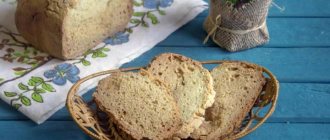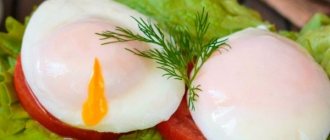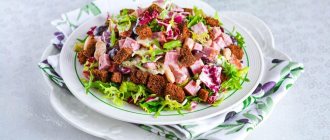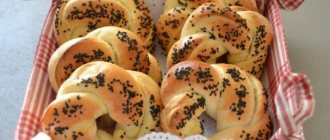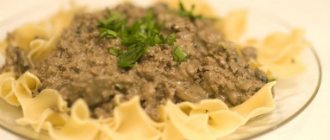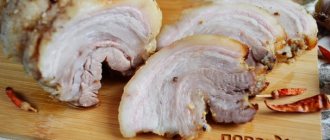July 14, 2015
Seal
- #Indian food
- #paneer
- #do it yourself
- #cheese
Category: DIY
At the request of two regular readers, I am publishing my proven recipe for homemade paneer cheese.
Making paneer cheese is quite simple and not problematic at home. But for the result to be successful, you need to know several nuances, which I came to in the process of practicing making other homemade cheeses, as well as dairy and sour-milk products at home.
At first glance, after reading several generally available recipes for making paneer cheese on the Internet or even in some printed publications, everything seems childishly simple. Heat the milk, add acid, strain and press, and you’re done. Anyone who has tried to make paneer cheese at home knows what I mean. But then it turns out that the taste is too reminiscent of cottage cheese, and not paneer, and maybe not even salted cheese. But it itself does not hold its shape, falling apart during cutting, not to mention further preparations.
High-quality paneer cheese should have a pleasant neutral taste and a uniform, elastic, kneaded consistency. It is perfect for frying, as it holds its shape during heat treatment. It's delicious on its own, fried and drizzled with lemon juice, even without making complex Indian curries. Therefore, I recommend that you prepare this cheese at home, even if you do not like spicy and piquant Indian dishes.
My secret to making paneer is whole milk. It is advisable to use homemade, or at least the richest and most natural store-bought one you can find. Also, a special aspect of preparation is the addition of milk powder, which increases the amount of protein in the dairy product, making the consistency richer. And salting the cheese after straining. Salt helps remove excess liquid, and the consistency of the cheese becomes more elastic. In addition, after adding acid, all further manipulations should be done as quickly as possible while the cheese is still hot, which will ensure a uniform consistency after pressing.
350-400 grams paneer cheese:
- 2 liters of milk (preferably homemade or the richest and most natural you can find)
- 30 grams of milk powder
- Juice of 1/2 lemon
- 1/4 tsp. salt
Cheese pressing: 8 hours Cooking time: 20 minutes Total cooking time: 8 hours 20 minutes
1) Mix a small amount of milk with dry milk until smooth.
Pour the mixture with the rest of the milk into a 3-liter saucepan. Mix well.
2) Bring almost to a boil (90 ° C if you have a thermometer) and add lemon juice. Mix well again and leave for 5 minutes, no longer.
3) Then mix well again and strain the cottage cheese through a fine sieve lined with several layers of gauze.
4) Add salt to the cheese in a sieve and mix well. And wrap it in gauze as quickly as possible and put it under a press (at least 2-3 kg). Leave overnight in the refrigerator.
The next day, paneer cheese can be used for its intended purpose.
Bon appetit!
See also
Indian paneer: what is it?
In Asia, India and Pakistan, paneer is a universal cheese base. The homemade product has a fresh taste with bright sourness. Outwardly, it resembles cottage cheese, but without the pungency. A strong natural acid is used to sour the curd mass. Milk is used as a basis. The cheese is famous for its crumbly structure and special moisture.
The name is of Persian origin. This is the name given to different types of cheese, similar to cottage cheese. There are also many variations of paneer - each nation has its own recipe and cooking technology. The classic version refers to Indian cuisine.
Indian cheese has many analogues in the world: for example, Russian cottage cheese. Real traditional paneer has its own preparation - a technology that allows you to get a product that has a unique taste: it looks like cottage cheese, but is not it.
What is Indian cheese?
- it always has a delicate, moderately uniform structure;
- the surface is smooth;
- the color is white, more marbled - if the cheese has additives, the color is different from the classic version;
- average humidity should be 30%;
- average fat content of at least 50%.
The Indian curd version should have a subtle aroma and give off a slight sourness. It is dense, uniform, without pronounced graininess. If it is too porous, the product was not prepared correctly.
Paneer is used as an independent delicacy or an ideal base. It is added to various fillings, casseroles, and salads. Paneer is served both raw and fried with various additives. Thanks to its unobtrusive taste, the cheese is universal in use.
Texture and taste
Curd products prepared using similar technologies usually have graininess. They are crumbly and do not hold one shape. Paneer may have a similar nature, but it looks moderately dense and uniform. The cut shows its texture and uniform density - there should be no porosity.
The Indian version does not have a crust, although it looks dense on the outside. Only under improper storage conditions does a harder crust appear. The color is also completely uniform - white over the entire area. There should be no inclusions or stains - the first signs of a low-quality product.
A good product has a not strong, but pronounced sour taste - the sourness is pleasant, not too sharp. Sometimes the traditional version has a nutty taste, which is also not strong: it is less common, but does not affect the nutritional value or beneficial properties of the product.
The cheese has a medium fat content, but the texture seems moist without any pronounced oily parts. Adding other ingredients makes the product even healthier. In India, a popular spice, turmeric, is often added to it. Thanks to it, the product turns out to be unusual not only in taste, but also in color.
Be sure to read:
Homemade processed cheese from cottage cheese? Easily!
Nutritional value
Paneer has 2 important qualities - fat content up to 50% and moisture content up to 30%. Cheese contains amino acids such as lysine and methionine, and important minerals for the body - calcium, potassium, sodium and zinc.
Paneer is not only nutritious, but also a very healthy product. In India, it is used to make you feel full faster, especially in the case of a vegetarian diet. Additives only increase the nutritional value of the product: they mainly add beneficial herbs or spices. The total calorie content of the traditional version is 274 kcal, which is less than most types of cheese.
Benefits and harms
In India, paneer is considered not just healthy, but an extremely necessary product in the daily diet. For vegetarians, it is indispensable and is a source of nutrients. Thanks to the potassium in its composition, it supports the functioning of the entire cardiovascular system. Calcium, also included in cheese, improves bone health and promotes the proper development of children.
Other beneficial properties of paneer:
- normalization of pressure;
- removal of toxins;
- assistance in the functioning of the gastrointestinal tract.
In India, they believe that slices of freshly prepared product increase a person’s overall endurance, reduce fatigue and affect the functioning of the nervous system. Paneer is equally beneficial for children, adults and the elderly.
Paneer is not a harmful product, but it is contraindicated for people with intolerance to certain components. If you have lactose intolerance, it is better to completely exclude curd varieties from your diet. Other contraindications are individual and rare.
Origin story
In India, paneer is considered a national product, while many other Asian countries (including China) simply do not have their own cheese. But this is not surprising, since the tradition of cattle breeding is especially strong here. Hence the love for dairy products, including ghee and the national yogurt drink, lassi.
The great-grandfather of paneer cheese was mentioned in the Vedas as early as 6000 BC. Modern cheese making in India dates back to the Indus Valley Civilization, which thickened milk using green leaves, berries, bark and yoghurt crops. But the Aryans who invaded the region considered this practice blasphemous. After all, the cow was considered sacred, so spoiling its milk, which occupied the first place in the food hierarchy of Ayurveda, was considered blasphemy.
The second wave of cheese's rise dates back to the Persian and Afghan rulers, who introduced it in the 16th century, mainly in northern India. In those days it was made using goat or sheep rennet.
Why is it called that? It's simple: the name "paneer" comes from the Persian and Turkish word "peynir", which simply means "cheese".
The modern method of preparing paneer, which involves "breaking" milk with an acid such as lemon juice, may have been introduced by the Portuguese in Bengal in the 17th century. This is the time when paneer and chena became what we know them as today.
Homemade Paneer Recipe
Vegetarian cheese, like Adyghe cheese, is prepared according to a simple recipe with a minimum of ingredients. Milk is used as a basis - its fat content should be high. Lemon juice is used as the sour ingredient. An additional component is yogurt or acid whey. They will also help guide the necessary reaction.
Optimal proportions for future cheese:
- 2.3 liters of milk;
- 5 tbsp. l. juice or 2 tsp. citric acid;
- 300 ml of yogurt without filler or additives or 600 ml of fresh sour whey.
It is important to choose the highest quality ingredients, if possible, homemade and with high fat content. It's better to take fresh food. If the whey sits for a long time, it will release acid and make the cheese just as sour. It is better to take natural yogurt, also as fresh as possible. If there are flavoring additives, the cheese will not work.
Other important nuances: skim milk is not suitable for making cheese. Its fat content does not greatly affect the calorie content of the final product, so even people who are losing weight are better off taking a full-fat milk base. Sour or stale milk will make the cheese sour and give it the wrong texture - it will not be soft, but dense and difficult to digest.
During cooking, it is better to devote time only to preparing the paneer: it is important that the milk base does not burn, overheat, or lumps appear in it. If the milk does not curdle during cooking, it means it was of poor quality. The only way out is to boil it and start cooking again.
Be sure to read:
What is burrata cheese, how to store it correctly and what to eat it with
Making cheese
To prepare paneer, you need a thick bottom pan. Pour milk into it. It is heated over medium heat. Gradually, the milk base will begin to rise: you need to ensure that the process continues, but the milk does not overflow over the edges of the pan.
While the base is heating up, the second part of the base is being prepared in parallel. It is necessary to remove the coagulating substance so that it reaches room temperature. You should put several layers of gauze on a regular colander: you cannot strain the mixture without gauze. We place a colander on a container to drain the future mixture.
As soon as the milk rises, the sour ingredient is introduced into it in a thin stream. The mixture will immediately begin to change: the future paneer will begin to separate from the whey. The reaction happens quickly. The mixture does not need to be stirred. While the paneer is folding, the pan remains on the fire, but it is also impossible to keep the workpiece at a high temperature for too long: it will immediately begin to burn, which will spoil the taste of the future product.
It is allowed to remove the pan from the heat only when the whey becomes completely transparent. Until it loses color, the mixture is heated. If the pan is removed, but the whey is still cloudy, the container should be returned to the stove and reheated. Immediately add a little more sour ingredient. If paneer is overheated, it will become tough and rubbery in taste.
As soon as the paneer separates from the whey, remove the pan completely from the heat and discard the mixture into the prepared colander. It must be rinsed immediately with cool water. Thanks to water, the correct shape of the cheese is formed, and the remains of unnecessary substances are removed. Next, the mixture is squeezed out.
Squeezing paneer
The spin technology depends on the density of the finished product required. If you plan to make a dense piece for cutting into cubes or slices, the gauze with the mixture must be tied tightly. With its help, a dense ball is formed. The top must be tied. Next, the gauze needs to be placed under a press to settle. The press will allow you to get the hardest possible product.
If you need a product of medium density and hardness, gauze with the mixture is also tied, but not too tightly. Then it is suspended by a support, and the mixture is allowed to drain. When the excess liquid is gone, the cheese will take the desired shape. The product will harden, but not completely. In the case when regular semi-soft cottage cheese is needed, the mixture is squeezed out and left in gauze, but without pressing or stretching. Remaining moisture will coat the mixture.
Cheese additives
Even the classic recipe has options for various additives. They make the taste of the product not just special, but also as spicy as possible. The best option for additives to enhance taste:
- spicy herbs – dried;
- Sun-dried tomatoes;
- grated lemon zest;
- fresh herbs - finely chopped;
- olives;
- nuts;
- paprika.
Be sure to read:
Soviet cheese is a hard rennet product made from cow's milk.
Additives are introduced at the stage when the mixture has been removed from the heat, but has not yet been completely strained. Additives only add a hint of flavor, so it is better not to overdo it with their quantity.
Production technology
Unlike most cheeses, it does not include rennet in the production process, making it vegetarian. The fact is that rennet is obtained from calf stomachs, but in countries where Hinduism is preached, cows are sacred animals.
The tactics for making paneer are simple, so it can be easily replicated at home. Instead of rennet, lemon or lime juice, citric acid, vinegar, yogurt or whey are used to curdle milk.
Traditionally, Indians made paneer exclusively from Indian water buffalo milk. But today, manufacturers are increasingly using a mixture of buffalo and cow's milk. This cheese can be made entirely from cow's milk, but this will inevitably affect its structure. In addition, the paneer will be less fatty.
Natural additives are not prohibited. They are introduced into the already boiled curd mixture immediately after turning off the heat, but before straining. In India, these are turmeric, paprika, and other dried spices and herbs, which change not only the taste, but also the color of the product.
Other common toppings: lemon zest, finely chopped fresh herbs, olives, nuts.
There is also a softer, crumbly version - chenna (ind. Channa, Chhena, Chakka).
How to choose the right paneer and where to store it?
A homemade or purchased vegetarian product can replace both durum varieties and cottage cheese, but it has its own limitations in terms of storage method. Store the mixture in the refrigerator in a separate container. The maximum shelf life is 4-5 days. It is important what kind of milk was used to prepare paneer. The less fresh it is, the faster the cheese will spoil.
To extend the shelf life of a cheese product, you need to put it not just in a dry container, but in salted water - a kind of brine. Cheese can be stored in brine for up to a week and does not lose its beneficial properties.
Another option to extend the shelf life is to cut the pieces and freeze them in the freezer. Frozen product will last up to several weeks. Afterwards it is simply defrosted at room temperature and served with various dishes.
Dishes with paneer
Due to its simple taste, paneer is used in many simple recipes. The most simplified option is slicing with paneer. It is suitable for breakfast and for a simple snack. The cheese product goes well with any type of bread, especially homemade.
In India and Asia, paneer is often fried, just like tofu. Then the cheese turns out not just tasty, but also piquant - if you experiment with seasonings, the result will be an independent snack.
A simple recipe for fried paneer in Asian style: for preparation you will need a cheese base, nori leaves and regular frying oil - to taste. Before frying, the nori leaves need to be moistened, then the chopped paneer is wrapped in it. The butter is melted in a frying pan, then peculiar envelopes are fried in it. The end result is a dish that tastes like fish.
Paneer is also added to soups, especially those with a creamy texture. It is cut into cubes, first rolled in seasoning. Another option is to fry the paneer first and then throw it into the soup: you get a very unusual taste.
To fry paneer you will need: coconut oil, seasonings like curry. It is better to cook the cheese mass immediately and fry it - this way it will turn out even tastier. Heat oil in a frying pan - it’s better to use coconut oil. Seasonings are added to the melted butter - not for breading, but for frying. Then the cheese is placed on the frying pan. It is well fried on both sides. The result is cheese pieces with a pleasant crust. They are consumed separately or added to soups and salads.
